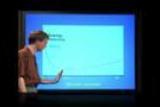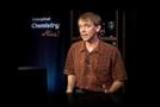Conceptual Physics
Chapter 34: Nuclear Fission and Fusion
The mass per nucleon graph is used to illustrate the mass-energy transformations involved in both nuclear fusion and fission. Duration: 3:21.
In order for nuclei to fuse together they must be hurled towards one another at great speeds in order of overcome the repulsive electric forces between them. This occurs in stars where nuclear fusion is sustained by the generation of much heat. Duration: 5:33.
Controlled thermonuclear fusion can be used for generating electricity without the formation of as many radioactive wastes as arise from nuclear fission power plants. Other benefits are also possible. There are some major technological hurdles, however, that still need to be overcome. Duration: 3:33.
Watch these additional videos to complete this tutorial.
Table of Videos
- Chapter 1: About Science
- Chapter 2: Newton's First Law
- Chapter 3: Linear Motion
- Chapter 4: Newton's Second Law
- Chapter 5: Newton's Third Law
- Chapter 6: Momentum
- Chapter 7: Energy
- Chapter 8: Rotational Motion
- Chapter 9: Gravity
- Chapter 10: Projectile and Satellite Motion
- Chapter 11: The Atomic Nature of Matter
- Chapter 12: Solids
- Chapter 13: Liquids
- Chapter 14: Gases
- Chapter 15: Temp, Heat, and Expansion
- Chapter 16: Heat Transfer
- Chapter 17: Change of Phase
- Chapter 18: Thermodynamics
- Chapter 19: Vibrations and Waves
- Chapter 20: Sound
- Chapter 21: Musical Sounds
- Chapter 22: Electrostatics
- Chapter 23: Electric Current
- Chapter 24: Magnetism
- Chapter 25: Electromagnetic Induction
- Chapter 26: Properties of Light
- Chapter 27: Color
- Chapter 28: Reflection and Refraction
- Chapter 29: Light Waves
- Chapter 30: Light Emission
- Chapter 31: Light Quanta
- Chapter 32: The Atom and the Quantum
- Chapter 33: The Atomic Nucleus
- Chapter 34: Nuclear Fission and Fusion
- Chapter 35: Special Theory of Relativity
- Chapter 36: General Theory of Relativity



